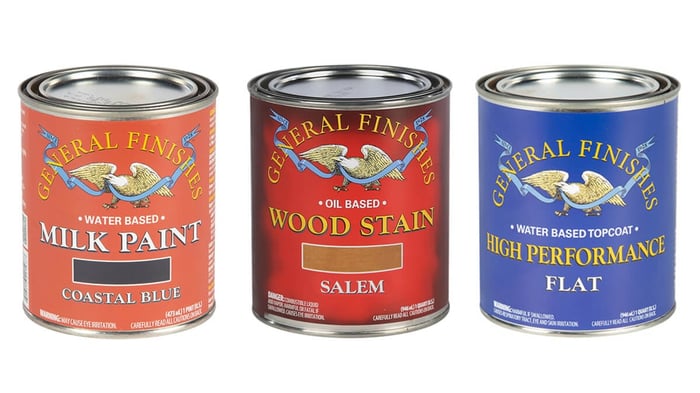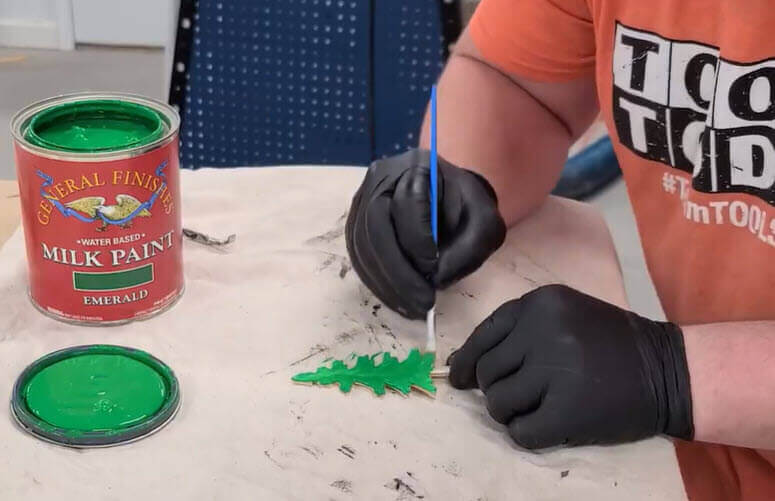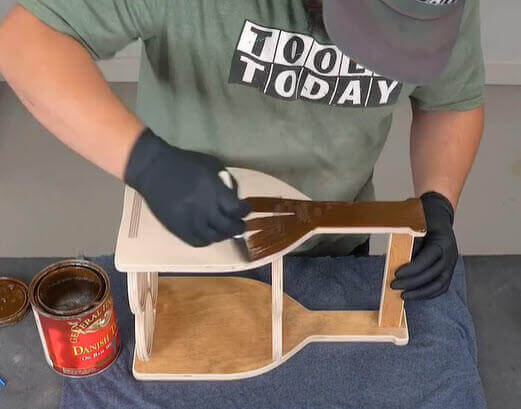
Tips for the Best Woodworking Finish
A good woodworking finish not only enhances the aesthetic appeal of your piece but also protects the wood from damage and improves its durability.
In this article, we will explore the importance of woodwork finishing, the different types of finishes available, factors to consider when choosing a finish, and tips for achieving the best woodworking finish.
So, let's dive in and elevate your woodworking game!
Why is Woodworking Finish Important?
Woodworking finishing is crucial for elevating the quality and enhancing the aesthetics of various woodworking projects. It requires a high level of expertise and craftsmanship to achieve flawless results, especially considering the diverse wood types used in different creations.
Certain wood types, such as oak or cherry, demand specific finishing techniques to bring out their natural beauty and unique characteristics. Expert woodworkers understand the importance of selecting the right finish to complement the grain and color of each type of wood.
By mastering the art of finishing, craftsmen can ensure that their projects not only look visually appealing but also stand the test of time with durable protection against wear and tear. Attention to detail in the finishing process can make all the difference in the final outcome of woodworking projects, turning them from ordinary to extraordinary.
Enhances the Aesthetic Appeal
Woodworking finishing plays a pivotal role in enhancing the aesthetic appeal of crafted pieces by adding intricate detailing, originality, and creative elements that elevate the design and overall visual impact.
These finishing touches are not merely about applying a coat of varnish or paint; they are about infusing each piece with a sense of character and individuality. Craftsmanship truly shines in the final stages of woodworking, where every stroke of a brush or polish of a surface is a testament to the dedication and passion of the creator.
The intricate designs and unique patterns created during the finishing process serve as a visual representation of the artisan's creativity and skill, transforming a simple piece of wood into a work of art.
Protects the Wood from Damage
Applying a quality finish to woodworking projects helps protect the wood from potential damage, ensuring longevity, and facilitating easier maintenance and restoration processes to maintain the durability of the surfaces.
Woodworking finishes act as a shield, safeguarding the surfaces from moisture, UV rays, scratches, and stains, thus preventing degradation over time. Regular maintenance is crucial to ensure the finish remains effective and to address any wear and tear. Restoring finishes through techniques like sanding and reapplication of protective coatings can revitalize the wood, bringing back its luster and extending its lifespan, making it a key aspect of preserving the beauty and functionality of wooden items.
Improves Durability
A well-crafted woodworking finish not only enhances the visual aspect but also improves the durability of the projects, showcasing seamless and flawless workmanship that underscores the quality of the craftsmanship.
This attention to detail in applying quality finishes plays a crucial role in protecting the wood from environmental factors such as moisture, heat, and wear, thus extending the lifespan of the piece.
The meticulous application of finishes not only adds aesthetic appeal but also creates a protective barrier that enhances the overall resilience of the woodwork.
The dedication to achieving a perfect finish reflects a commitment to excellence and ensures that each project stands the test of time, becoming a testament to the skill and dedication of the woodworker.
Types of Woodworking Finishes
There are various types of woodworking finishes available, including stains, paints, as well as varnishes, lacquers, oils, and waxes, each offering unique properties and characteristics suited for different applications.
- Stains are commonly used to add color to wood while still allowing the natural grain to show through, making them ideal for highlighting the beauty of the wood.
- Paint, by offering a wide range of colors and finishes, can completely transform the appearance of wood. It provides an opaque coverage, hiding the wood grain but allowing for a dramatic or subtle change in the look, depending on the chosen color and finish type. Suitable for both interior and exterior projects, paint can offer protection while giving wood a brand-new identity.
- Varnishes, on the other hand, provide a protective layer that enhances the durability of the wood, making them suitable for furniture and high-traffic items.
- Lacquers offer a glossy finish and quick drying time, perfect for projects that require a smooth, sleek appearance.
- Oils are great for bringing out the natural warmth and depth of wood, making them popular for wooden surfaces that need regular maintenance.
- Waxes provide a soft, satin finish, adding a layer of protection and highlighting the wood's texture.
Stain
Stains are a popular choice in woodworking finishes for adding color and enhancing the natural beauty of the wood surface, providing a versatile application method for achieving desired aesthetics.
Applying stain to wood allows for a wide range of customization, from subtle tinting to deep, rich hues that can transform the look of any project. The type of application technique used, whether it's wiping, spraying, or brush application, significantly influences the final outcome. Different methods can result in variations in color intensity, depth, and uniformity across the wood surface. Some woodworkers prefer multiple thin coats for a layered effect, while others opt for a single heavy application to create a more opaque finish.
Paint
Paint, as a distinct category of wood finish, stands out for its ability to completely cover and transform the wood surface. Unlike stains that accentuate the wood's natural patterns, paint provides an opaque layer, allowing for a full spectrum of color choices from subtle to vibrant shades. This finish can significantly alter the visual appeal of a piece by offering either a matte, gloss, or satin look, depending on the paint type used. The application of paint not only changes the color but also can add a layer of protection against moisture, wear, and tear. Its versatility makes it suitable for a wide range of projects, from furniture and cabinets to exterior woodwork, offering both aesthetic enhancement and functional benefits.
Varnish
Varnishes are essential woodworking finishes that offer protective qualities while providing a range of finishes including gloss, matte, and satin, enhancing the visual appeal and durability of the wood surfaces.
These protective features of varnishes make them highly versatile in woodworking projects, allowing craftsmen to choose the level of sheen they desire, from high shine to a more subtle, muted effect. Gloss finishes offer a mirror-like reflection, while matte finishes provide a smooth, non-reflective surface, and satin finishes strike a balance between the two.
Along with their aesthetic benefits, varnishes shield wood surfaces from moisture, UV rays, and general wear and tear, prolonging the life of the furniture or structures they coat.
Lacquer
Lacquers are popular woodworking finishes known for their smooth coating application and excellent polishing properties, providing a high-quality finish that enhances the overall appearance of the wood surfaces.
These finishes create a protective layer that not only adds to the aesthetics but also offers durability and resistance to wear and tear.
One of the key advantages of lacquers is their versatility; they can be applied to various types of wood, ranging from hardwoods to softer woods, and are compatible with different application methods like brushing, spraying, or wiping. This versatility allows woodworkers to achieve a consistent and flawless finish across diverse woodworking projects, whether it's intricate furniture pieces or simple DIY crafts.
Shellac
Shellacs are versatile woodworking finishes known for their excellent sealing properties, making them ideal for restoration projects and providing essential supplies for enhancing the durability of wood surfaces.
Due to their ability to penetrate deep into the wood fibers, shellacs create a strong barrier that protects the surface from moisture, stains, and scratches. This sealing attribute not only preserves the natural beauty of the wood but also adds a layer of protection that prolongs the lifespan of woodworking projects. Whether used on antique furniture or newly crafted pieces, shellacs serve as a reliable coating that brings out the richness of the wood grain while offering a long-lasting finish that withstands wear and tear.
Oil
Oils are favored woodworking finishes that contribute to woodcare routines, showcasing artisanal craftsmanship through innovative and creative application methods that enhance the natural beauty of the wood.
The application of oils in woodworking projects not only serves a functional purpose by protecting the wood from moisture and wear but also adds a rich depth and luster to the surface. Craftsmen often utilize various techniques such as hand-rubbed finishes, brushing, or spraying to create unique textures and patterns that highlight the natural grain and color variations of the wood. By carefully selecting the type of oil and applying it in multiple thin coats, woodworkers can achieve a professional-looking finish that not only beautifies the piece but also accentuates the intricate details of their craftsmanship.
Wax
Waxes are versatile woodworking finishes that excel in detailing work, refinishing projects, and routine maintenance, offering a protective layer that enriches the overall appearance of wood surfaces.
The application of wax on wood not only enhances the natural beauty of the grains but also helps in highlighting intricate details in carvings, moldings, or turned elements. Waxes serve as an excellent foundation for refinishing efforts, providing a smooth base for subsequent coats of varnish or additional protection.
When used as part of a regular maintenance routine, waxes can help prolong the life of wooden furniture by shielding it from dust, moisture, and minor abrasions, making it easier to clean and restore its luster.

Factors to Consider when Choosing a Woodworking Finish
Selecting the right woodworking finish involves considering various factors such as the type of wood, desired finish outcome, preferred application method, and whether the project is intended for indoor or outdoor use.
The type of wood being used plays a crucial role in determining the suitable finish. Different woods require specific finishes to highlight their natural characteristics and provide adequate protection.
Understanding the intended finish outcome is essential, whether it's a matte, glossy, or satin finish. The choice of application method, such as brushing, spraying, or wiping on the finish, can impact the final result's quality and appearance.
Considering whether the finished piece will be used indoors or outdoors helps in selecting finishes that can withstand varying environmental conditions and maintain their durability over time.
Type of Wood
The type of wood used in a project plays a significant role in determining the appropriate woodworking finish, considering factors such as surface characteristics and the application method for coating.
Different wood species have varying levels of porosity, which can affect how well they absorb certain finishes. For instance, hardwoods like oak may require a different type of finish compared to softwoods like pine due to their density. The natural color and grain patterns of the wood can influence the choice of finish to enhance or preserve these characteristics. Understanding the unique properties of each wood type is essential to selecting the right finish that will not only protect the wood but also enhance its beauty.
Desired Finish
Understanding the desired finish, whether it's a glossy, satin, or matte appearance, is crucial in selecting the right woodworking finish that aligns with the project's aesthetics and visual appeal.
For instance, if you aim for a more modern or sleek look, a glossy finish might be the perfect choice, as it reflects light and creates a polished appearance. On the other hand, a satin finish offers a balance between shine and subtlety, making it ideal for projects that require a touch of elegance. Matte finishes, known for their non-reflective and smooth appearance, are great for achieving a contemporary or vintage vibe. Matching the finish to the project's overall style can enhance its beauty and bring out its true essence.
Application Method
The application method of a woodworking finish, whether it involves brushing, polishing, or drying techniques, impacts the overall finish quality and the final appearance of the wood surface.
Brushing is a popular method that allows for the even application of the finish, creating a smooth and consistent surface. This technique also helps in achieving a uniform coat that enhances the natural beauty of the wood.
On the other hand, polishing involves rubbing the finish to bring out a glossy shine, adding depth and richness to the surface. Proper drying techniques are essential as they ensure that the finish sets correctly, preventing uneven patches or streaks.
Each application method plays a crucial role in determining the final look and durability of the wood finish.
Indoor or Outdoor Use
Determining whether a woodworking project is intended for indoor or outdoor use is essential in selecting a finish that provides adequate protection, aligns with the design aesthetics, and enhances the durability of the wood surfaces.
For indoor projects, finishes primarily focus on enhancing the appearance of the wood while providing a layer of protection against daily wear and tear. Indoor finishes often emphasize visual appeal, such as enhancing the natural grain and color of the wood.
On the other hand, outdoor projects require finishes that offer a higher level of protection against elements like sunlight, moisture, and temperature variations. Weather-resistant finishes designed for outdoor use help prevent warping, cracking, and fading over time. By choosing the right finish based on the project's environment, woodworkers ensure longevity and functionality in their creations.
Tips for Achieving the Best Woodworking Finish
Mastering the art of woodworking finishing requires precision, skill, and attention to detail to achieve the best results, whether creating handmade custom pieces or refining existing projects.
To improve your craftsmanship and enhance the quality of your woodworking finishes, it is crucial to choose the right tools and materials for each project. Invest in high-quality brushes, sandpapers, and finishes to ensure a professional touch to your work.
Practice different finishing techniques such as staining, varnishing, or painting to expand your skillset and achieve a variety of desired effects. Remember, patience is key when it comes to woodworking finishes; take your time and pay close attention to the details to create a truly stunning outcome.
Proper Sanding and Preparation
Proper sanding and preparation of the wood surface are foundational steps in achieving a smooth finish that enhances the wood's originality and sets the stage for flawless outcomes.
- Sanding:Begin with a coarse grit sandpaper to remove any major imperfections, and gradually move to finer grits. Sanding through the grits (e.g., starting at 80-grit and progressing to 220 or higher) ensures a smooth base. Always sand in the direction of the grain to avoid scratches.
- Cleaning: After sanding, remove all dust and debris from the surface. A tack cloth, vacuum, or compressed air can be effective. Clean surfaces are crucial for a smooth finish.
- Repair: Fill any cracks, holes, or imperfections with wood filler or a similar product. Make sure it's fully dried and sand smooth before proceeding.
By meticulously sanding and preparing the wood surface, craftsmen ensure that imperfections are smoothed out, allowing the finish to adhere evenly. This meticulous process not only creates a visually appealing result but also helps in maintaining the wood's natural beauty. When the surface is properly sanded and prepared, the finish penetrates deeply, highlighting the wood grain and color variations. Proper sanding and preparation make the surface more receptive to wood stains and sealants, prolonging the life of the finished piece.
Choosing the Right Brush or Applicator
Selecting the appropriate brush or applicator for coating application is a crucial step in achieving professional woodworking finishes, requiring expert tips to ensure precise and effective results.
When it comes to choosing the right tool for the job, factors such as the type of finish being used and the desired outcome play a significant role. For instance, for fine details and intricate work, a small brush with fine bristles may be more suitable, while larger surfaces may benefit from a wider applicator to ensure even coverage. Considering the viscosity of the finish can help determine whether a brush or a spray gun would be more effective. By understanding these considerations, woodworkers can enhance the quality of their finishes and create impressive results.
Applying Multiple Coats
Applying multiple coats of the woodworking finish enhances the sealing properties, adds depth, and contributes to a well-crafted outcome that elevates the overall appearance and durability of the project.
- Layering multiple coats of finish not only ensures better protection against moisture, scratches, and wear but also results in a smoother, more lustrous surface.
- With each additional coat, imperfections in the wood are filled, creating a flawless finish. This technique allows craftsmen to achieve a greater color saturation and an enhanced three-dimensional effect, making the woodwork project visually appealing and engaging.
The careful application of multiple coats drastically improves the longevity and quality of the final product, showcasing the mastery and attention to detail of the woodworker.
Proper Drying and Curing Time
Allowing adequate drying and curing time for the woodworking finish is essential to ensure proper protection and durability of the surfaces, enhancing the longevity and quality of the final product.
Not only does correct timing help in preventing premature wear and damage, but it also allows the finish to fully bond with the wood, creating a strong and resilient barrier against moisture, heat, and other factors that could compromise its integrity.
Rushing through the drying and curing process can result in a subpar finish that is more prone to chipping, cracking, or peeling over time, diminishing the overall appearance and functionality of the woodwork.
Buffing and Polishing for a Smooth Finish
Buffing and polishing the woodworking finish are essential final touches that contribute to achieving a smooth surface with desired gloss or satin sheen, elevating the overall appearance of the project.
These processes play a crucial role in refining the texture of the wood, removing any imperfections or rough spots left from previous sanding stages.
By carefully buffing and polishing, the woodworker can enhance the natural beauty of the wood grain, bringing out its unique patterns and colors.
These finishing techniques help seal and protect the wood, ensuring durability and longevity for the final piece.
The attention to detail in buffing and polishing truly sets apart a well-crafted woodworking project from one that lacks that professional touch.
Protecting the Finished Product
Implementing proper protection measures for the finished woodworking product is essential for ongoing maintenance, restoration efforts, and ensuring the longevity of the crafted piece by utilizing appropriate supplies and techniques.
This proactive approach not only safeguards the wood's natural beauty and structural integrity but also helps in preserving the artisan's hard work and dedication. By regularly maintaining and restoring woodworking pieces, you are not just enhancing their aesthetics but also increasing their value and sentimental significance. The choice of suitable supplies such as quality finishes, protective coatings, and polishing agents plays a crucial role in maintaining the durability of the wood over time. Incorporating effective techniques like gentle cleaning, refinishing, and periodic touch-ups can significantly prolong the life of the woodworking product.
Frequently Asked Questions
What is the importance of a smooth finish in woodworking?
A smooth finish not only adds aesthetic appeal to your woodworking projects, but it also protects the wood from damage and helps to bring out the natural beauty of the wood grain.
What are some tips for achieving a smooth finish on wood?
Some tips for achieving a smooth finish on wood include properly sanding the wood, using high-quality finishing products, and applying multiple thin coats rather than one heavy coat.
How can I avoid common finishing mistakes?
To avoid common finishing mistakes, be sure to follow the manufacturer's instructions for the finishing product, use proper ventilation, and avoid applying too much pressure when sanding.
What is the best way to apply a wood finish?
The best way to apply a wood finish is by using a clean, lint-free cloth or brush. Be sure to apply the finish in the direction of the wood grain and to avoid over-applying the product.
What are some techniques for achieving a professional-looking finish?
Some techniques for achieving a professional-looking finish include using a wood conditioner before applying the finish, sanding in between coats, and using a fine-grit sandpaper for a final sanding before applying the finish.
Are there any eco-friendly options for wood finishing?
Yes, there are eco-friendly options for wood finishing such as using natural oils like linseed or tung oil, or using water-based finishes instead of oil-based ones. These options are better for the environment and still provide a beautiful finish for your woodworking projects.






